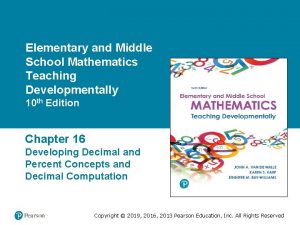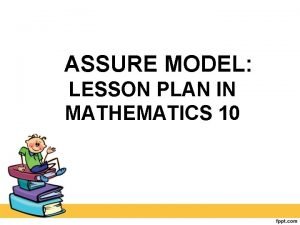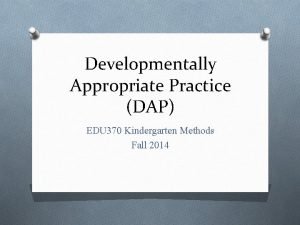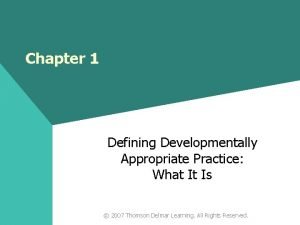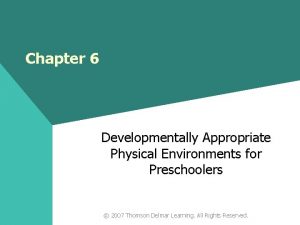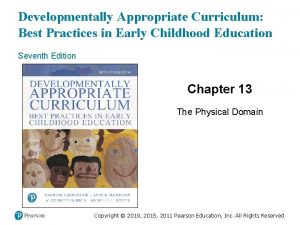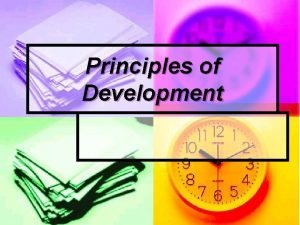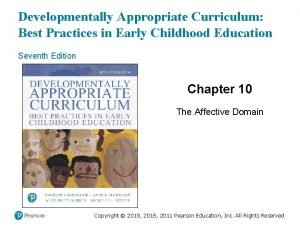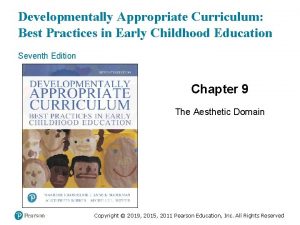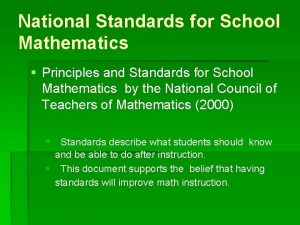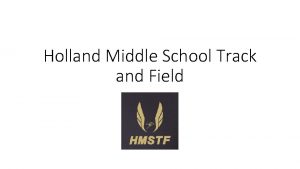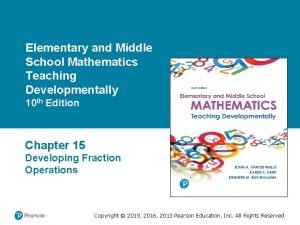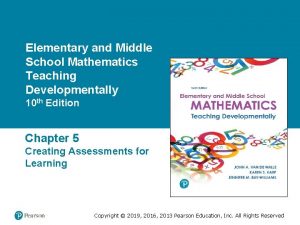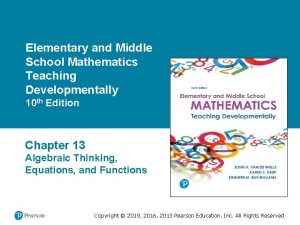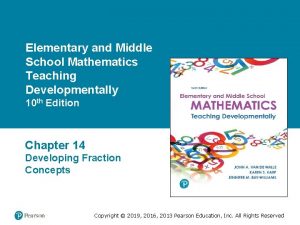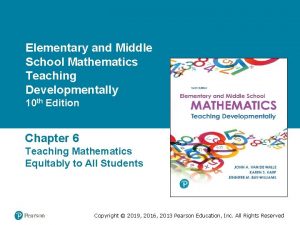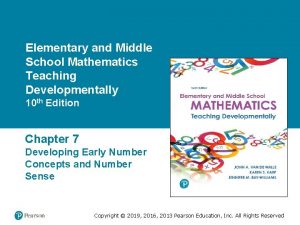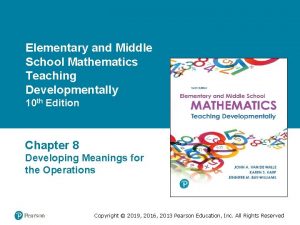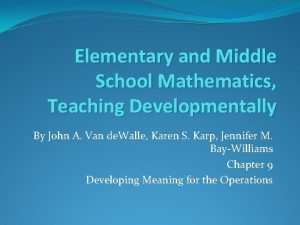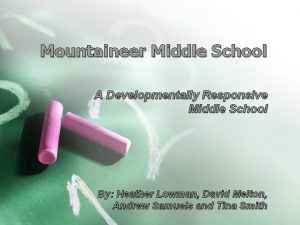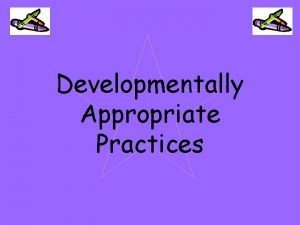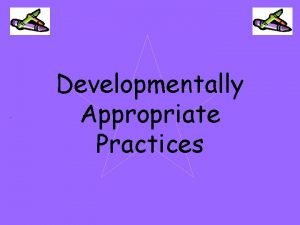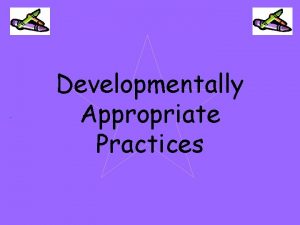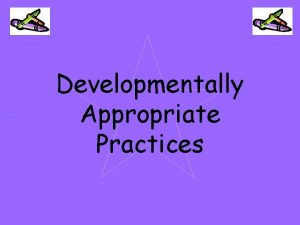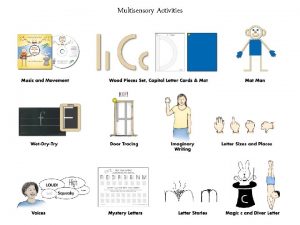Elementary and Middle School Mathematics Teaching Developmentally 10


























- Slides: 26

Elementary and Middle School Mathematics Teaching Developmentally 10 th Edition Chapter 12 Developing Strategies for Multiplication and Division Computation Copyright © 2019, 2016, 2013 Pearson Education, Inc. All Rights Reserved

Learner Outcomes 12. 1 Recognize how understanding place value and the properties of operations support the learning of a variety of computational strategies in multiplication. 12. 2 Identify a variety of models and recording approaches for developing the multiplication algorithm. 12. 3 Explain invented strategies for division with multidigit numbers. 12. 4 Explain the development of the standard algorithm for division and ways to record students’ thinking. 12. 5 Identify ways to teach computational estimation for multidigit multiplication and division as a way to develop students’ flexibility and ability to recognize reasonable answers. Copyright © 2019, 2016, 2013 Pearson Education, Inc. All Rights Reserved

Standards-Based Development Students should solve multiplication and division problems with numbers appropriate for their grade level: 3 rd Fluently multiply and divide within 100. 4 th Multiply a whole number up to 4 digits and find whole number quotients for up to a four digit dividend with onedigit divisors. 5 th Fluently multiply multi-digit whole numbers and find whole number quotients with up to four-digit dividends and two-digit divisors. Copyright © 2019, 2016, 2013 Pearson Education, Inc. All Rights Reserved

Invented Strategies for Multiplication (1 of 3) Complete Number 63 × 5 Useful Representations 6 × 34 Copyright © 2019, 2016, 2013 Pearson Education, Inc. All Rights Reserved

Invented Strategies for Multiplication (2 of 3) Students decompose numbers that reflect an understanding of place value. Try each of the four strategies and teach someone else the methods. Copyright © 2019, 2016, 2013 Pearson Education, Inc. All Rights Reserved

Invented Strategies for Multiplication (3 of 3) Manipulate numbers to make calculations easier. Compensation strategies Adjustment or Compensation: “Half-then-double strategy” used when 5 or 50 involved Using a close compatible number (and the distributive property). Copyright © 2019, 2016, 2013 Pearson Education, Inc. All Rights Reserved

Multiplication of Multidigit Numbers Multiplication of multidigit numbers supports the importance of place value and emphasis on the number rather than separate digits. Cluster Problems – Using facts and combinations already known in order to figure out more complex computations. Copyright © 2019, 2016, 2013 Pearson Education, Inc. All Rights Reserved

Multiplication of Multidigit Numbers What strategies do you see in these examples? There were 35 dogsleds. Each sled was pulled by 12 dogs. How many dogs were there in all? Copyright © 2019, 2016, 2013 Pearson Education, Inc. All Rights Reserved

Standard Algorithms for Multiplication (1 of 2) Begin with models Area Models - connected and open Notice the base-ten language Each section is a partial product Figuring out the size of each subrectangle and combining to find the whole Copyright © 2019, 2016, 2013 Pearson Education, Inc. All Rights Reserved

Standard Algorithms for Multiplication (2 of 2) Open Array - A semi-concrete representation of the area model Blank rectangle (not to scale): • Mark off the subdivisions based on the digits in the factors • Record partial products inside each subdivision. • Find the sum of partial products Copyright © 2019, 2016, 2013 Pearson Education, Inc. All Rights Reserved

Develop the Written Record for Multiplication of Multidigit Numbers Copyright © 2019, 2016, 2013 Pearson Education, Inc. All Rights Reserved

Invented Strategies for Division (1 of 4) Two concepts of division: 1. Partition or Fair Sharing [PD] Eileen’s piggy bank has 783 pennies. She wants to share them equally with her 4 friends and herself. How many pennies will Eileen and each of her friends get? 2. Measurement or repeated subtraction [MD] Jumbo the elephant loves peanuts. His trainer has 625 peanuts. If he gives Jumbo 20 peanuts each day, how many days will the peanuts last? Copyright © 2019, 2016, 2013 Pearson Education, Inc. All Rights Reserved

Invented Strategies for Division (2 of 4) A. Partition or fair sharing with base-ten materials B. Sets up the base-ten but uses a four column recording chart C. Solves with a multiplicative approach Copyright © 2019, 2016, 2013 Pearson Education, Inc. All Rights Reserved

Invented Strategies for Division (3 of 4) What number times 6 will be close to 164 with less than 6 remaining? Alternatively - Think of half of 164, and ask, “What number times 6 would be close to 82? ” Missing-Factor c. 164 stickers; 6 stickers to a bag. How many bags? Thought Process: I want to put 6 stickers in each bag. So 6 × ? = 164 I estimate 6 × 10 = 60, and double that is 120. Another 60 is 180, which is too high. My answer is between 20 and 30 bags. I have 44 more stickers to put in bags. 6 × 7 = 42 with 2 left over. My answer is 27 bags with 2 stickers left over. Copyright © 2019, 2016, 2013 Pearson Education, Inc. All Rights Reserved

Invented Strategies for Division (4 of 4) Cluster Problems Cluster for 527 ÷ 4: Cluster for 381 ÷ 72: 500 ÷ 4 10 × 72 100 × 4 5 × 72 25 × 4 2 × 72 6× 4 4 × 72 Provides students with a sense that problems can be solved different ways with different starting points. Copyright © 2019, 2016, 2013 Pearson Education, Inc. All Rights Reserved

Standard Algorithm for Division (1 of 3) Thinking process Partition or Fair Share 583 ÷ 4 Instead of 4 goes into 5, we want students to think 5 hundreds, 8 tens and 3 ones. Put in a context – We have 5 cartons, 4 boxes and 3 pieces of candy to share with 4 schools (with 10 pieces per box and 10 boxes per carton). There are enough hundreds for each set (school) to get 1 hundred. That leaves 1 hundred I can’t share. Trade that 100 for 10 tens for a total of 18 tens. Give each set (school) 4 tens with 2 left over. Trade 2 tens for 20 ones for a total of 23 ones Give each set (school) 5 ones with a remainder of 3. Gave each group 1 hundred, 4 tens and 5 ones with 3 left over. Copyright © 2019, 2016, 2013 Pearson Education, Inc. All Rights Reserved

Standard Algorithm for Division (2 of 3) Partial Quotients using a Visual Model for 1506 ÷ 3 = ? Copyright © 2019, 2016, 2013 Pearson Education, Inc. All Rights Reserved

Standard Algorithm for Division (3 of 3) Explicit Trade Method 1. Share and record the number of pieces 2. Record the number of pieces shares. Multiply to find this number 3. Record the number of pieces remaining. Subtract to find this number. 4. Trade for smaller pieces, and combine with any of the same-sized pieces that are there already. 5. Record number in next column. Copyright © 2019, 2016, 2013 Pearson Education, Inc. All Rights Reserved

Activity 12. 4: Double, Double- No Toil and Trouble! Materials - Post a division problem and model a side bar chart 3842 ÷ 14. Will the answer be in 1000 s, 100 s or 10 s? Create a doubling chart → Then use repeated subtraction, starting with 3842 – 2800. Does this help with the estimation approach? Copyright © 2019, 2016, 2013 Pearson Education, Inc. All Rights Reserved

Computational Estimation (1 of 2) Standards-based development - 4 th graders should assess the reasonable of answers using mental math and computation and estimation strategies including rounding. Rounding in multiplication Compatible numbers in division Copyright © 2019, 2016, 2013 Pearson Education, Inc. All Rights Reserved

Computational Estimation (2 of 2) Estimation Strategies: Front End focuses on the leading or leftmost digit in a number, i. e. , 480 × 7 becomes 400 × 7. 3482 ÷ 7 ( 100 × 7 too low, 1000 × 7 too high) 3400 s in the dividend and 34 ÷ 7 is between 4 and 5 the front end would be between 400 and 500 Rounding changes the numbers in the problems to others that are easier to compute mentally. i. e. 7 × 485 round 485 to 500 for estimate of 3500 Compatible numbers involves changing the number to one that would make the problem easier to compute mentally, e. g. , 413 × 24 use 400 × 25 or 497 ÷ 48 use 500 ÷ 50. Copyright © 2019, 2016, 2013 Pearson Education, Inc. All Rights Reserved

Activity 12. 8: Computational Estimation (1 of 2) Jump to It Students begin with a start number and use mental estimation to find how many times they will need to multiply that start number (estimate of jumps) to reach the goal (going over or under the amount). The numbers can be differentiated to meet the needs and experiences of your students, use the Jump to It Activity Page or use these to get you started: Jump Number Goal Estimate of Jumps Was Estimate Reasonable? 5 72 Blank 11 97 Blank 7 150 Blank 14 135 Blank 47 1200 Blank Copyright © 2019, 2016, 2013 Pearson Education, Inc. All Rights Reserved

Activity 12. 8: Computational Estimation (2 of 2) To check estimates on the calculator, students can enter 0 [jump number] and press once for every estimated jump, or multiply [jump number] [estimate of jumps]. Students with disabilities may need to have a number line close by. Then they can mark their goal number with a sticky dot and use another color dot to mark their first estimate. This strategy will support them in the process of deciding whether they need to increase or decrease their estimation of the number of jumps. Copyright © 2019, 2016, 2013 Pearson Education, Inc. All Rights Reserved

Activity 12. 9 Hit the Target: Computational Estimation Materials - Calculators Directions Pick a start number and an operation (any of the 4 operations) Students enter the start number (× + − ÷) = to make the result land in the stated target. Copyright © 2019, 2016, 2013 Pearson Education, Inc. All Rights Reserved

Common Challenges and Misconceptions for Multiplication and Division Computation (1 of 2) Common Error or Misconception What It Looks Like How to Help 1. When multiplying students ignore internal zeros. When students are given the problem: Focus on the meaning of a zero in any number by starting with a number like 4005 and asking how that would be shown with materials. Explicitly discuss the role of a 0 in the number. 4005 multiplied by 9 = 3645 The student just writes the products of 9 × 5 and then 9 × 4, ignoring the multiplications of 0 tens and 0 hundreds. Never refer to 0 as a “placeholder. ” This terminology gives the impression that it is not a numerical value and it is there just as a way to fill a space. Discuss whether this answer is reasonable by thinking about 4000 × 10. Copyright © 2019, 2016, 2013 Pearson Education, Inc. All Rights Reserved

Common Challenges and Misconceptions for Multiplication and Division Computation (2 of 2) Use an approach that mimics addition by considering the tens and ones separately 28 × 36 calculates 20 × 30 and adds to 8 × 6 Misinterpret the regrouped number in a multiplication problem, i. e. , 37 × 5 should be 5 × 7 and 5 × 30 - when regrouping product of 5 × 7, they multiplied 3 × 2 for 5 × 60. Misuse the distributive property in division, e. g. , 95 ÷ 16 broke the divisor into 95 ÷ 10 and 95 ÷ 6 versus dividend. Ignore the internal zeros when dividing, e. g. , 8002 ÷ 2 = 41. Copyright © 2019, 2016, 2013 Pearson Education, Inc. All Rights Reserved
 Elementary and middle school mathematics 10th edition
Elementary and middle school mathematics 10th edition Dpscd clever
Dpscd clever Assure lesson plan sample
Assure lesson plan sample Japanese kindergarten uniform yellow hat
Japanese kindergarten uniform yellow hat Specific objectives of teaching mathematics
Specific objectives of teaching mathematics Expository and exploratory approach
Expository and exploratory approach Micro teaching is a scaled down encounter
Micro teaching is a scaled down encounter Developmentally appropriate practice for kindergarten
Developmentally appropriate practice for kindergarten Meaning of developmentally appropriate practice
Meaning of developmentally appropriate practice Developmentally appropriate environment
Developmentally appropriate environment Developmentally appropriate curriculum 7th edition
Developmentally appropriate curriculum 7th edition Define developmentally appropriate practice
Define developmentally appropriate practice Principles of developmentally appropriate practice
Principles of developmentally appropriate practice An appropriate developmental curriculum
An appropriate developmental curriculum Developmentally appropriate curriculum 7th edition
Developmentally appropriate curriculum 7th edition Principles and standards for school mathematics
Principles and standards for school mathematics Holland middle school track and field
Holland middle school track and field Ubujan elementary school
Ubujan elementary school William beanes elementary
William beanes elementary Mackay elementary school tenafly
Mackay elementary school tenafly Sealey elementary
Sealey elementary Leila davis elementary school
Leila davis elementary school Wexford elementary
Wexford elementary Kistler elementary school
Kistler elementary school Pta membership drive ideas
Pta membership drive ideas Terry fox elementary school
Terry fox elementary school Sudduth elementary school
Sudduth elementary school
